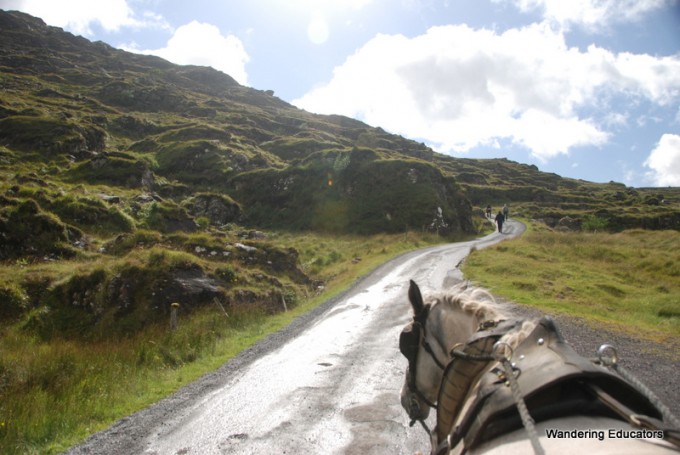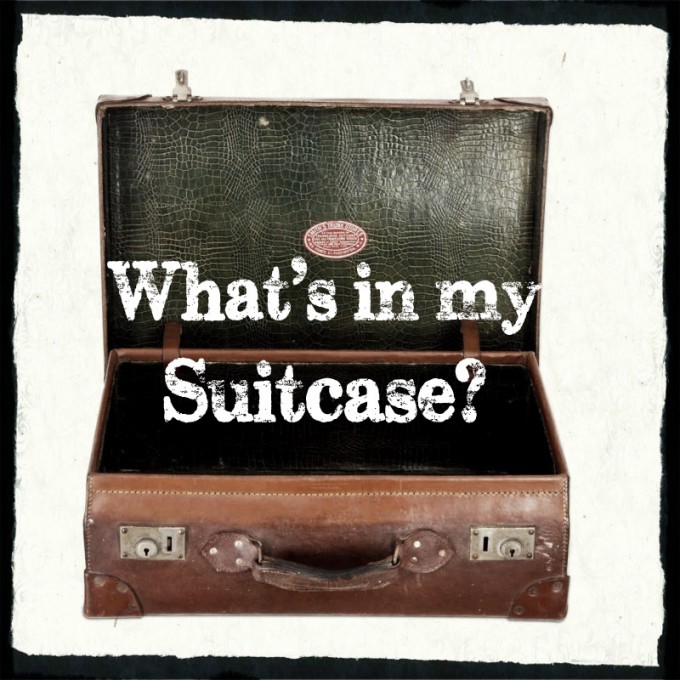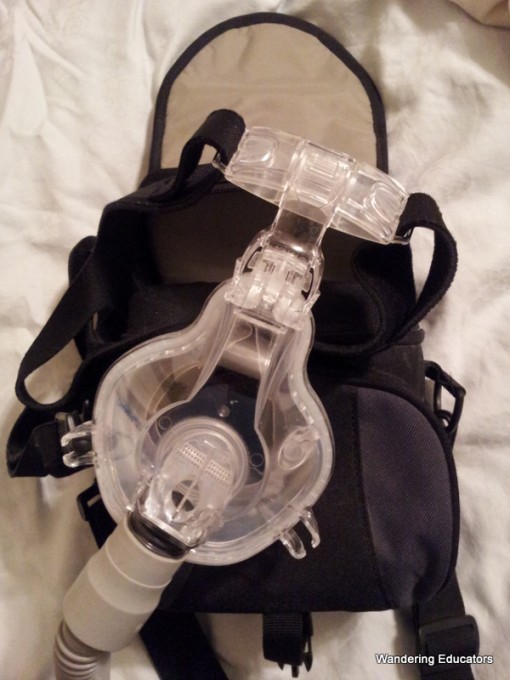Today, I am so excited to have Dr. Jessie Voigts from Wandering Educators share her tips for making traveling with a disability possible!
~~~~~~~~~~~~~~~~~~~~~~~~~~~~~~~~~~~~~~~~~~~~~~~~~~~~~~~~~~~~~~
Packing can be such a chore, especially when you have disabilities. Why? Well, some disabilities require more things – medicines, medical gear, batteries, perhaps a wheelchair or scooter. While every disability is different – and every person with a disability is different – here are some general guidelines to packing for travel with disabilities.
Medicine. Ascertain your medicinal needs – and pack enough. Be sure to get prescriptions filled for more than the time you will be gone. As well, get a paper prescription from your doctor, or upload it to the cloud. Carry your doctor’s phone number in several places, in case you need to reach her. It’s also a good idea, if you have many prescriptions, to get a letter from your doctor explaining your medical conditions, with the names of the medicines you are taking. When crossing borders, better to be safe than sorry. The TSA allows more than 3 oz of liquid/gel for medical use – check their website for current guidelines. Pack all medication and medical devices in your carryon bag(s), in case your luggage gets lost.
 In the Gap of Dunloe, Ireland – where everyone had to get out of the pony cart and walk because of the steep hills. Before we went, I made sure I could ride in the cart the whole time.
In the Gap of Dunloe, Ireland – where everyone had to get out of the pony cart and walk because of the steep hills. Before we went, I made sure I could ride in the cart the whole time.
Do your research on your destination. What items that you need will be available there? If you have access to a high quality wheelchair scooter where you are going, it will definitely save wear and tear on yours to not take it. On the other hand, if you desperately need something and can’t live without it, be sure to travel with your own. When we went to Ireland and Scotland, Candy Harrington, of Barrier Free Travels, shared with us a guide in the UK called Open Access. Open Access lists all kinds of accessible information on places to stay, attractions, availability of wheelchairs for rent, and more. See if where you’re going has the same sort of information. It’s worth digging into, before you travel (and pack).
Phone numbers (and your cell phone). You may need all kinds of phone numbers, including repair services for devices and wheelchairs, doctors, emergency contacts, local pharmacies, hospitals, insurance carriers, hotels, taxi services, airlines, etc. Be sure to print several copies off, pack them in different bags, and email it to yourself. If anything happens, you’ll be prepared.
~CPAP machine fits perfectly in a camera bag.~
Medical devices. My husband travels with a CPAP for his sleep apnea. He has a special travel CPAP (which is smaller than his regular one), and carries an extension cord and electrical adapter/converter for when we’re in countries with different electrical outlets. He also packs his CPAP mask in a camera bag – it is the perfect size, and the right amount of padding and protection. If you are flying, know that medical devices that you carry do NOT count as carryons, so you can take another carryon with you, if you’re able to do so. Besides traveling with your medical devices (and ways to charge them), you should have a letter from your doctor as to the medical necessity of traveling with them. If you need to travel with oxygen, there are some FAA approved oxygen concentrators. Be sure to check with the TSA for current regulations. If you have a medical device or metals implanted (pacemaker, defibrillator, plates, screws, etc.), you can carry a note from your doctor or an ID card with the information, and request hand-screening instead of xray screening in airports. For hearing aids, be sure to pack extra batteries (and maybe a backup).
Food/Nutrition – pack enough food supplies to get you to your destination (and until you can get to a store). If you have low blood sugar or food allergies, bring enough healthy snacks to keep your energy up during travel. If you need supplements while you’re traveling, be sure to bring enough (but you already knew that!).
Accoutrements – whether it is a neck pillow for flying, or additional pillows in the car to make your journey more comfortable, enjoying the journey is critical. Music, comfortable clothes, medicine, snacks and beverages – they all make a difference on your travels. As author Liz Hamill notes in her book, The Imperfect Traveler’s Guide to Traveling with Pain, "those of us with chronic disabilities have a lot of base stress and unpleasantness in our lives. The more stuff we can do to make ourselves happy, the better off we’ll be, both emotionally and physically."
Wheelchair/Mobility items – I often use an electric wheelchair scooter when we travel. I don’t take it on overseas journeys (don’t trust the airplanes!), but rent one when I am there, if possible. When we’re driving, it is easy to fit it into our car. We have a disability license plate, but I also always bring my disability placard, in case we’re using someone else’s car to get around. Be sure to bring your charger cords, if needed (and, as mentioned before, an extension cord).
Airplane – be sure to bring enough food and support items to get through the flight.
A good attitude – I loathe hearing this, but it’s true. For some people with disabilities, life is incredibly difficult. Add travel to the mix, and you’ve got a recipe for pain and challenging times. While many abled people seem to weather travel issues just fine, these can totally detail some travelers who just can’t cope with the physical demands. A good attitude can help – be aware that things will change, airplanes will get delayed, traffic jams occur, etc. If you’re prepared (snacks! Medicine!), it will be slightly less tortuous. And remember – you’ll get there, eventually!
Meet the Author!
Jessie Voigts is a mom who loves sharing the world with her daughter.
She has a PhD in International Education, and is constantly looking for ways to increase intercultural understanding, especially with kids (it’s never too young to start!). She has lived and worked in Japan and London, and traveled around the world. Jessie is the publisher of Wandering Educators, a travel library for people curious about the world. She founded the Family Travel Bloggers Association, and the Youth Travel Blogging Mentorship Program. She’s published six books about travel and intercultural learning, with more on the way. You can usually find her family by water – anywhere in the world.



Hi Jessie…We've been friends for a long time, first on Gather and then on Facebook. Thank you so much for this article. I am on a walker and have no cartilage in my knees. I am very interested in how you go about renting an electric scooter or walker in Europe, particularly in Denmark. My grandchildren are in Copenhagen and I would love to visit. Their 3-year assignment with the State Department will be over in a year. They are visiting us at the end of the month for 9 days but I would love to see them in their own habitat 🙂 Scandinavia is not known for being handicap accessible. I also would like to return to Tuscany. Thank you for your time…Linda
wonderful article, I enjoyed reading this from Dr. Voigts, thanks for posting
noel recently posted…Kings Landing Hawaii – Travel Photo Mondays #4
http://www.suitcasesandsippycups.comhttp://www.suitcasesandsippycups.com/2013/06/what-to-pack-for-traveling-with-disabilities.htmlWhat to Pack for Traveling with Disabilities? – Suitcases and Sippy Cups%POSTDOMAIN%
Traveling with seniors or people with disability is must be a responsible travel.They have necessities that must be met always and things that they need such as oxygen tanks for breathing.